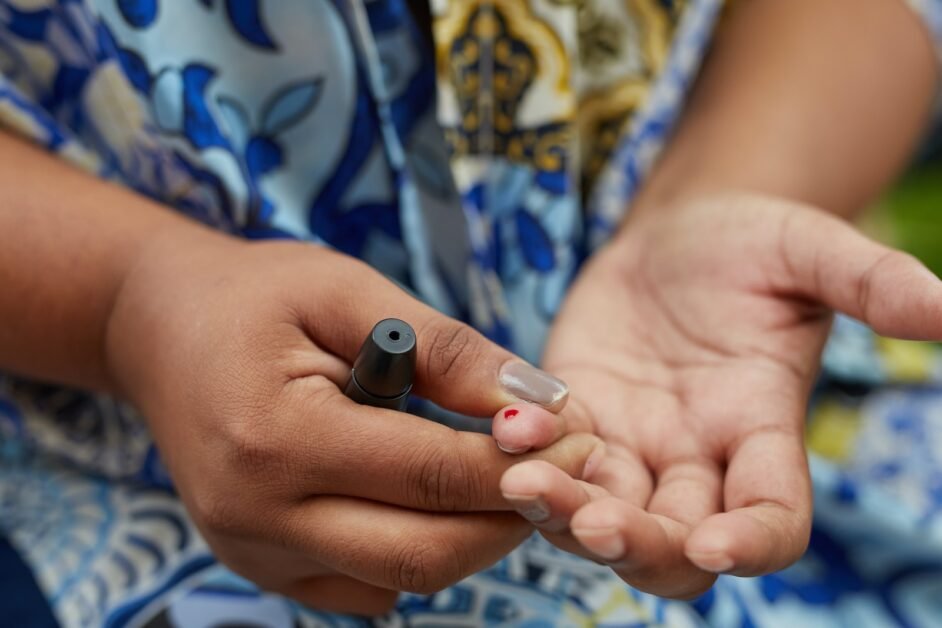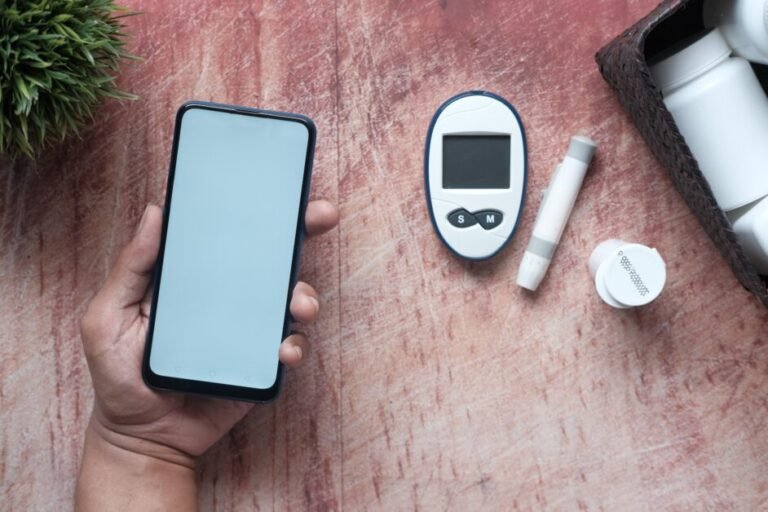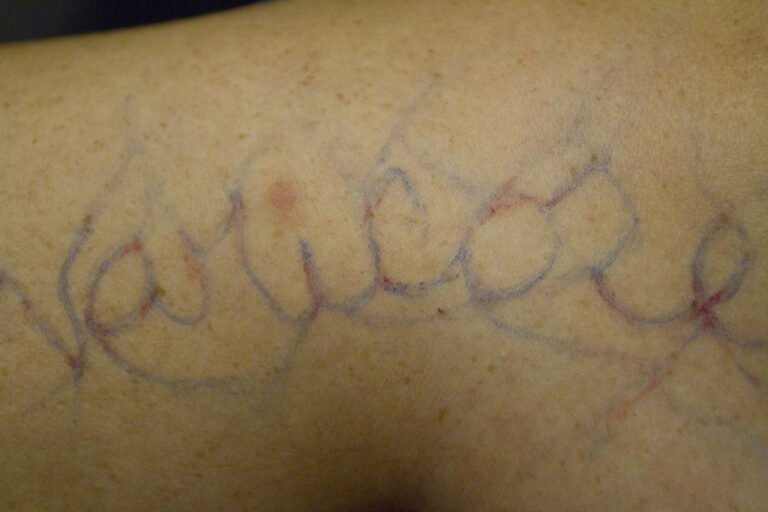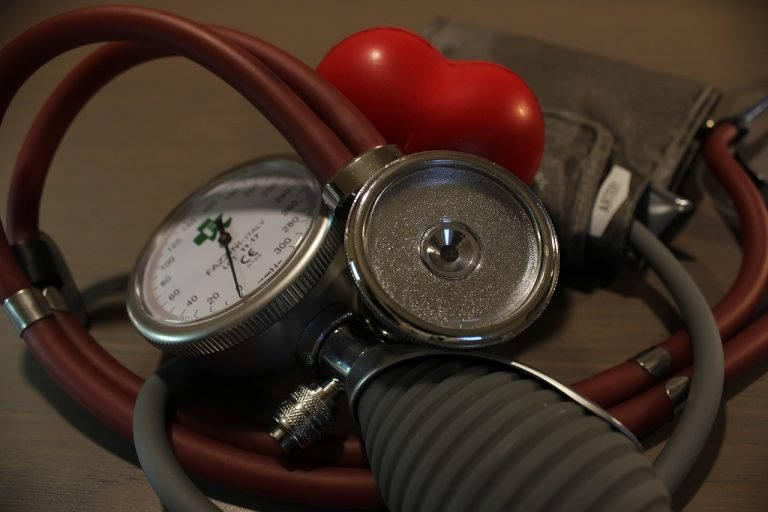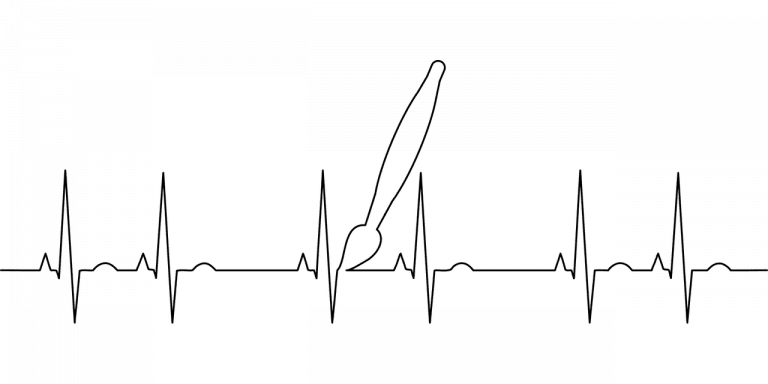Table of Contents
Microvascular Complications of Diabetes: Top 10 Strategies for Prevention and Treatment
Introduction:
Living with diabetes and dealing with microvascular complications of diabetes can sometimes feel like navigating through treacherous waters, constantly on guard. And when it comes to microvascular complications, knowledge truly is power. These sneaky adversaries may be small in size, but their impact on your health can be monumental. That’s why we’re here today – to arm you with the top strategies for preventing and treating these microvascular complications of diabetes.
In this blog post, we’ll dive deep into understanding these intricacies of microvascular complications of diabetes, highlighting the importance of prevention and treatment along the way. From glycemic control to healthy lifestyle choices and regular physical activity – we’ve got you covered! So buckle up and get ready to discover how you can take charge of your well-being while outsmarting those pesky diabetes-related hurdles!
Are you ready? Let’s make waves together as we explore the world of microvascular complications within the realm of diabetes care!
Understanding Microvascular Complications of Diabetes
Diabetes is a chronic condition that affects the body’s ability to regulate blood sugar levels. Over time, high blood sugar can damage the small blood vessels in various organs, leading to what are known as microvascular complications of diabetes.
One common type of microvascular complication is diabetic nephropathy, which affects the kidneys. When the tiny blood vessels in the kidneys become damaged, they can no longer effectively filter waste from the bloodstream. This can lead to kidney disease and ultimately kidney failure if left untreated.
Another microvascular complication is diabetic retinopathy, which affects the eyes. High blood sugar levels can damage the delicate blood vessels in the retina, causing vision problems and even blindness if not managed properly.
In addition to these complications, diabetes can also lead to neuropathy – nerve damage caused by impaired blood flow. This can result in numbness or tingling sensations in extremities such as hands and feet.
It’s important for individuals with diabetes to understand these potential complications so they can take proactive steps to prevent them from occurring or worsening over time. By maintaining good glycemic control through diet and medication management, managing their blood pressure and cholesterol levels, adopting a healthy lifestyle including regular physical activity, and getting regular monitoring and screening tests done; people with diabetes have a better chance at preventing or minimizing these microvascular complications.
Stay informed about your health condition by consulting with your healthcare provider regularly regarding newer medications that may help manage specific complications like kidney disease (diabetic nephropathy), retinopathy (diabetic eye disease) or neuropathy (nerve damage). With proper understanding of microvascular complications of diabetes comes greater empowerment for prevention and treatment!
Importance of Prevention and Treatment Of Microvascular Complications Of Diabetes
Prevention and treatment are two crucial aspects when it comes to managing microvascular complications of diabetes. It’s not just about controlling blood sugar levels; it’s about taking proactive measures to prevent these complications from occurring in the first place, or at least minimizing their impact.
The importance of prevention cannot be stressed enough. By adopting a holistic approach that includes lifestyle modifications, medication adherence, regular check-ups, and healthy habits, individuals with diabetes can significantly reduce their risk of developing microvascular complications. This is especially relevant considering that once these complications set in, they can lead to serious health issues such as kidney disease, retinopathy (eye damage), neuropathy (nerve damage), and even cardiovascular problems.
Treatment also plays a vital role in managing existing microvascular complications of diabetes microvascular effectively. With advancements in medical technology and an improved understanding of the underlying mechanisms involved in these conditions, healthcare professionals now have more options for providing targeted treatments to patients. This may include medications such as ACE inhibitors or ARBs for high blood pressure management or statins for lipid control.
However, prevention should always take precedence over treatment whenever possible. By focusing on maintaining optimal glycemic control through diet and exercise along with active monitoring of blood pressure and cholesterol levels, individuals can minimize their risk of developing microvascular complications associated with diabetes.
Remember: prevention is better than cure! Taking appropriate steps today can help preserve your health tomorrow by reducing the likelihood of experiencing debilitating diabetic side effects down the line. So let’s prioritize prevention strategies while also staying vigilant about ongoing treatment efforts – because every little effort counts when it comes to combating microvascular complications caused by diabetes!
Microvascular Complications Of Diabetes Strategy 1: Glycemic Control
Glycemic control is a key strategy in the prevention and treatment of microvascular complications in diabetes. It involves managing blood sugar levels to keep them within a target range. This can be achieved through various methods, such as medication, insulin therapy, and lifestyle changes.
One important aspect of glycemic control is monitoring blood glucose levels regularly. This helps individuals with diabetes understand how their bodies respond to different foods and activities, allowing for adjustments to be made accordingly. By keeping blood sugar levels stable, the risk of developing microvascular complications like diabetic retinopathy or neuropathy can be reduced.
In addition to monitoring blood sugar levels, it’s essential to follow a well-balanced diet that includes whole grains, lean proteins, fruits, vegetables, and healthy fats. Avoiding sugary foods and beverages is crucial in maintaining optimal glycemic control.
Regular physical activity also plays a significant role in glycemic control. Exercise helps improve insulin sensitivity and allows muscles to use glucose more efficiently. Aim for at least 150 minutes of moderate-intensity aerobic exercise per week along with strength training exercises two days a week.
It’s important not to overlook medications or insulin therapy prescribed by healthcare professionals when it comes to achieving glycemic control. These treatments are designed specifically for individuals with diabetes and can help manage blood sugar effectively.
Remember that everyone’s journey towards achieving optimal glycemic control will vary based on individual factors such as age, health condition, or personal preferences. Working closely with healthcare professionals is vital in determining the most suitable strategies for each person’s unique needs.
By focusing on effective glycemic control strategies like regular monitoring of blood glucose levels, following a balanced diet plan combined with regular exercise regimen alongside proper medication management; individuals living with diabetes can significantly reduce their risk of developing microvascular complications over time
Strategy 2: Blood Pressure Management
High blood pressure, also known as hypertension, is a common complication of diabetes. It can put strain on your blood vessels and increase the risk of microvascular complications. That’s why managing your blood pressure is crucial for preventing and treating these complications.
One effective strategy for blood pressure management is lifestyle modifications. These include adopting a healthy diet low in sodium and saturated fats, exercising regularly, maintaining a healthy weight, limiting alcohol consumption, and avoiding smoking. These lifestyle changes can help lower your blood pressure naturally.
In some cases, lifestyle modifications alone may not be enough to control high blood pressure. Your healthcare provider may prescribe medications such as ACE inhibitors or diuretics to help bring it under control.
Regular monitoring of your blood pressure is essential to ensure that it stays within the target range recommended by your healthcare team. This allows you to take prompt action if any changes occur and prevent further complications down the line.
Remember that managing your blood pressure goes hand in hand with overall diabetes management. By keeping both conditions in check, you significantly reduce the risk of developing microvascular complications associated with diabetes.
Always consult with your healthcare provider to develop an individualized plan tailored specifically for you based on your unique needs and medical history.
Microvascular Complications Of Diabetes Strategy 3: Lipid Control
When it comes to managing diabetes and preventing microvascular complications, keeping your lipid levels in check is crucial. High cholesterol and triglyceride levels can wreak havoc on your blood vessels, leading to serious complications down the line.
To maintain optimal lipid control, it’s essential to adopt a healthy diet that focuses on low-fat, high-fiber foods. Incorporate plenty of fruits, vegetables, whole grains, lean proteins, and heart-healthy fats into your meals. Avoid saturated and trans fats found in fried foods, processed snacks, and fatty cuts of meat.
In addition to a nutritious diet, regular physical activity can also help improve lipid profiles. Engaging in activities like brisk walking or cycling for at least 30 minutes a day can positively impact your cholesterol levels.
If lifestyle modifications alone aren’t enough to achieve desired results, medication may be necessary. Your healthcare provider may prescribe statins or other lipid-lowering drugs to help regulate your lipid levels effectively.
Remember that maintaining proper lipid control isn’t just about reducing the risk of microvascular complications; it’s also important for overall cardiovascular health. By taking proactive steps towards controlling lipids through diet modification and physical activity while following medical advice when needed – you’re setting yourself up for better long-term outcomes with diabetes management!
Strategy 4: Healthy Lifestyle Choices
When it comes to managing and preventing microvascular complications of diabetes, making healthy lifestyle choices is crucial. These choices can have a significant impact on your overall health and well-being.
First and foremost, maintaining a balanced diet is essential. Focus on consuming whole foods that are rich in nutrients while limiting processed foods and sugary drinks. Opt for lean proteins, fruits, vegetables, whole grains, and healthy fats. This will help you maintain stable blood sugar levels and promote weight management.
In addition to good nutrition, staying active is key. Regular physical activity not only helps control blood sugar levels but also improves cardiovascular health. Aim for at least 150 minutes of moderate-intensity exercise per week or 75 minutes of vigorous-intensity exercise.
Furthermore, prioritize stress management techniques such as meditation or deep breathing exercises. Chronic stress can negatively affect glucose control and increase the risk of complications.
Avoid smoking and limit alcohol consumption as they can exacerbate diabetes-related complications.
By adopting these healthy lifestyle choices, you can enhance your overall well-being while mitigating the risk of microvascular complications associated with diabetes!
Strategy 5: Regular Physical Activity
Regular physical activity is crucial for individuals with diabetes to prevent and manage microvascular complications. Engaging in exercise helps improve blood glucose control, reduce the risk of heart disease, and enhance overall well-being.
When it comes to physical activity, consistency is key. Aim for at least 150 minutes of moderate-intensity aerobic exercise or 75 minutes of vigorous-intensity exercise every week. This can include activities like brisk walking, cycling, swimming, or dancing.
Exercise not only lowers blood sugar levels but also improves insulin sensitivity. It helps your body use insulin more effectively and contributes to weight management – another important aspect of diabetes care.
Incorporate strength training exercises into your routine as well. Building muscle mass can help increase metabolism and improve blood sugar control over time.
Remember to consult with your healthcare provider before starting any new exercise regimen. They can provide personalized recommendations based on your health status and fitness level.
Stay motivated by finding activities you enjoy! Join a group fitness class or try out different sports until you find what suits you best. Remember that even small bursts of activity throughout the day – like taking the stairs instead of the elevator – can make a difference!
With regular physical activity as part of your diabetes management plan, you’re taking proactive steps towards reducing the risk of microvascular complications while improving both your physical and mental health!
Strategy 6: Medications and Insulin Therapy
When it comes to managing diabetes and preventing microvascular complications, medications and insulin therapy play a crucial role. These treatments are prescribed by healthcare professionals based on individual needs and can help control blood sugar levels effectively.
There are various types of medications available for diabetes management. Some work by stimulating the pancreas to produce more insulin, while others focus on improving insulin sensitivity or reducing glucose production in the liver. Insulin therapy, on the other hand, involves injecting insulin into the body to regulate blood sugar levels.
It is important to follow your healthcare provider’s instructions regarding medication dosage and timing. Consistency is key when it comes to taking these medications as prescribed. Skipping doses or altering dosages without medical guidance can lead to uncontrolled blood sugar levels and increase the risk of microvascular complications.
In addition to medications, lifestyle modifications such as healthy eating habits and regular physical activity are essential for optimal diabetes management. Medications should be viewed as a complementary tool rather than a standalone solution for controlling diabetes.
Remember that each person’s treatment plan may vary depending on their specific needs and overall health condition. It is always best to consult with your healthcare provider before making any changes to your medication regimen.
Stay tuned for our next blog section where we will discuss another important strategy for preventing microvascular complications of diabetes!
Strategy 7: Regular Monitoring and Screening
Regular monitoring and screening are essential strategies for managing microvascular complications of diabetes. By closely monitoring blood sugar levels, blood pressure, and cholesterol levels, healthcare providers can identify any potential problems early on and take appropriate measures to prevent or treat them.
One crucial aspect of regular monitoring is keeping track of blood sugar levels through self-monitoring or continuous glucose monitoring systems. This allows individuals with diabetes to make necessary adjustments in their medication or lifestyle choices to keep their blood sugar within target ranges.
Additionally, routine screenings for other conditions related to diabetes, such as kidney disease and retinopathy, are imperative. Regular urine tests can help detect early signs of diabetic kidney disease, while eye exams can reveal the presence of diabetic retinopathy.
It’s also crucial for individuals with diabetes to have regular check-ups with their healthcare provider. During these visits, various assessments will be done including measuring blood pressure levels and checking lipid profiles.
By actively participating in regular monitoring and screening efforts, individuals with diabetes can stay proactive in preventing or managing microvascular complications effectively. Remember that prevention is key!
Microvascular Complications Of Diabetes Strategy 8: Diabetic Kidney Disease Management
Diabetic kidney disease, also known as diabetic nephropathy, is a serious microvascular complication that can develop in individuals with diabetes. It occurs when high blood sugar levels cause damage to the small blood vessels in the kidneys, leading to decreased kidney function over time.
Managing diabetic kidney disease requires a comprehensive approach that includes both lifestyle modifications and medical interventions. One of the key strategies for managing this condition is maintaining tight control of blood glucose levels. This can be achieved through regular monitoring of blood sugar levels and adherence to an individualized diabetes management plan.
In addition to glycemic control, it is important for individuals with diabetic kidney disease to manage their blood pressure effectively. High blood pressure can further damage the kidneys and worsen the progression of kidney disease. Medications called angiotensin-converting enzyme (ACE) inhibitors or angiotensin receptor blockers (ARBs) are commonly prescribed to help lower blood pressure and protect the kidneys.
Dietary changes are also crucial for managing diabetic kidney disease. Reducing sodium intake, limiting protein consumption, and increasing fluid intake may be recommended by healthcare professionals to support optimal kidney function.
Regular check-ups and monitoring are essential for early detection and intervention in cases of worsening renal function. Your healthcare provider may order lab tests such as urine albumin-to-creatinine ratio (ACR) or estimated glomerular filtration rate (eGFR) on a regular basis to assess your kidney health.
By adopting these strategies for diabetic kidney disease management along with close collaboration with your healthcare team, you can take proactive steps towards preserving your overall renal health while living with diabetes
Strategy 9: Diabetic Retinopathy Management
Diabetic retinopathy is a serious microvascular complication that affects the eyes of individuals with diabetes. It occurs when high blood sugar levels damage the blood vessels in the retina, leading to vision problems and even blindness if left untreated.
To effectively manage diabetic retinopathy, it is crucial to prioritize regular eye exams. These screenings can help detect any signs of retinal damage early on, allowing for prompt intervention and treatment. Your ophthalmologist will conduct various tests during these exams, such as dilating your pupils to get a clear view of your retina.
In addition to routine check-ups, maintaining good blood sugar control plays a vital role in managing diabetic retinopathy. Keeping your glucose levels within target ranges can help slow down the progression of this condition and reduce the risk of severe complications.
Another important aspect of diabetic retinopathy management is controlling other risk factors such as high blood pressure and cholesterol levels. Properly managing these conditions through lifestyle modifications or medications can further protect your eyes from damage.
Furthermore, adopting healthy lifestyle choices like eating a balanced diet rich in fruits, vegetables, and omega-3 fatty acids can provide necessary nutrients for optimal eye health. Avoiding smoking and limiting alcohol consumption are also beneficial habits for preserving vision.
If you have already developed advanced stages of diabetic retinopathy, treatments like laser therapy or injections may be recommended by your healthcare provider. These interventions aim to prevent further deterioration and preserve existing vision.
Remember that managing diabetic retinopathy requires ongoing commitment and collaboration with healthcare professionals specializing in eye care. By prioritizing regular screenings, maintaining proper glycemic control, addressing additional risk factors, making healthy lifestyle choices,and following prescribed treatments,you are taking proactive steps towards protecting your precious sight!
Stay tuned for more strategies on how to prevent and treat microvascular complications associated with diabetes!
Strategy 10: Diabetic Neuropathy Management
Diabetic neuropathy is a common microvascular complication of diabetes that affects the nerves, particularly in the hands and feet. It can cause pain, numbness, tingling sensations, and even muscle weakness. Managing diabetic neuropathy is crucial to prevent further nerve damage and improve quality of life.
One key strategy for managing diabetic neuropathy is maintaining tight blood sugar control. High blood sugar levels can worsen nerve damage over time, so it’s essential to keep your glucose levels within target range through medication, diet, and regular exercise.
Another important aspect of diabetic neuropathy management is pain relief. Your healthcare provider may prescribe medications such as antidepressants or anticonvulsants to help alleviate discomfort associated with neuropathic pain.
Additionally, taking good care of your feet is crucial in preventing complications from diabetic neuropathy. Regularly inspecting your feet for any signs of infection or injury and keeping them clean and moisturized can minimize the risk of developing ulcers or infections. It will also help deal with your microvascular complications of diabetes.
Physical therapy exercises might also be recommended by your healthcare provider to improve strength and flexibility in affected muscles and reduce pain symptoms.
Avoiding alcohol consumption and quitting smoking are vital steps towards managing diabetic neuropathy effectively. Both alcohol abuse and smoking have been shown to exacerbate nerve damage in individuals with diabetes.
Remember that each person’s experience with diabetic neuropathy may vary, so it’s important to work closely with your healthcare team to develop an individualized management plan that suits your needs best.
Microvascular Complications of Diabetes: Conclusion
As we reach the end of this blog post about microvascular complications of diabetes, it’s important to recognize that preventing and treating microvascular complications of diabetes requires a comprehensive approach. By focusing on strategies such as glycemic control, blood pressure management, lipid control, healthy lifestyle choices, regular physical activity, medications and insulin therapy, regular monitoring and screening, diabetic kidney disease management, diabetic retinopathy management, and diabetic neuropathy management – individuals with diabetes can significantly reduce their risk.
By implementing these strategies into their daily lives and working closely with healthcare professionals who specialize in diabetes care, individuals can take proactive steps towards managing microvascular complications of diabetes effectively. It’s crucial to remember that prevention is key when it comes to microvascular complications.
While there may be challenges along the way and adjustments needed to treatment plans or lifestyles, staying committed to these strategies will ultimately lead to better outcomes. With proper education and support from healthcare providers or support groups for people living with diabetes – no one has to face the journey alone!
Remember: knowledge is power. Stay informed about the latest research advancements in managing microvascular complications of diabetes. By staying up-to-date on new developments in treatments or technologies designed specifically for patients with diabetes – you’ll have even more tools at your disposal for prevention and treatment.
So let’s continue our pursuit towards healthier lives by taking control over our health! Together we can make a difference in reducing the impact of microvascular complications associated with diabetes.
FAQ’s
1. Can microvascular complications of diabetes be prevented?
Yes, with the right strategies and management techniques, it is possible to prevent or delay the onset of microvascular complications in individuals living with diabetes. By maintaining good glycemic control, managing blood pressure and lipid levels, adopting a healthy lifestyle, engaging in regular physical activity, taking prescribed medications or insulin therapy as recommended by your healthcare provider, and undergoing regular monitoring and screening tests, you can greatly reduce the risk of developing these complications.
2. How often should I monitor my blood sugar levels?
The frequency of blood sugar monitoring may vary depending on individual circumstances and treatment plans. It is best to consult with your healthcare provider to determine how often you should check your blood sugar levels at home. Generally, people with diabetes are advised to monitor their blood glucose multiple times per day using a glucose meter or continuous glucose monitoring (CGM) device.
3. Are there any specific dietary recommendations for preventing microvascular complications of diabetes?
Following a balanced diet that focuses on whole foods such as fruits, vegetables, lean proteins, whole grains, and healthy fats is beneficial for managing diabetes and reducing the risk of microvascular complications. It is important to limit processed foods high in added sugars and unhealthy fats. Additionally, working with a registered dietitian can provide personalized guidance on meal planning and portion control.
4. Can diabetic kidney disease be reversed?
Diabetic kidney disease cannot usually be completely reversed once it has developed; however early detection through regular screenings can help slow its progression and manage symptoms effectively through lifestyle modifications (such as controlling blood pressure), medication adjustments/therapy prescribed by your doctor.
5. Is there a cure for diabetic retinopathy?
Currently there is no known cure for diabetic retinopathy; however timely intervention including laser treatments or injections into the eyes can help manage this condition effectively if detected early enough.
6.What are some common symptoms of diabetic neuropathy?
Common symptoms of diabetic neuropathy may include numbness or tingling in the extremities, burning or sharp pains, muscle weakness, and loss of coordination. It is important to consult with your healthcare provider if you experience any of these symptoms.

